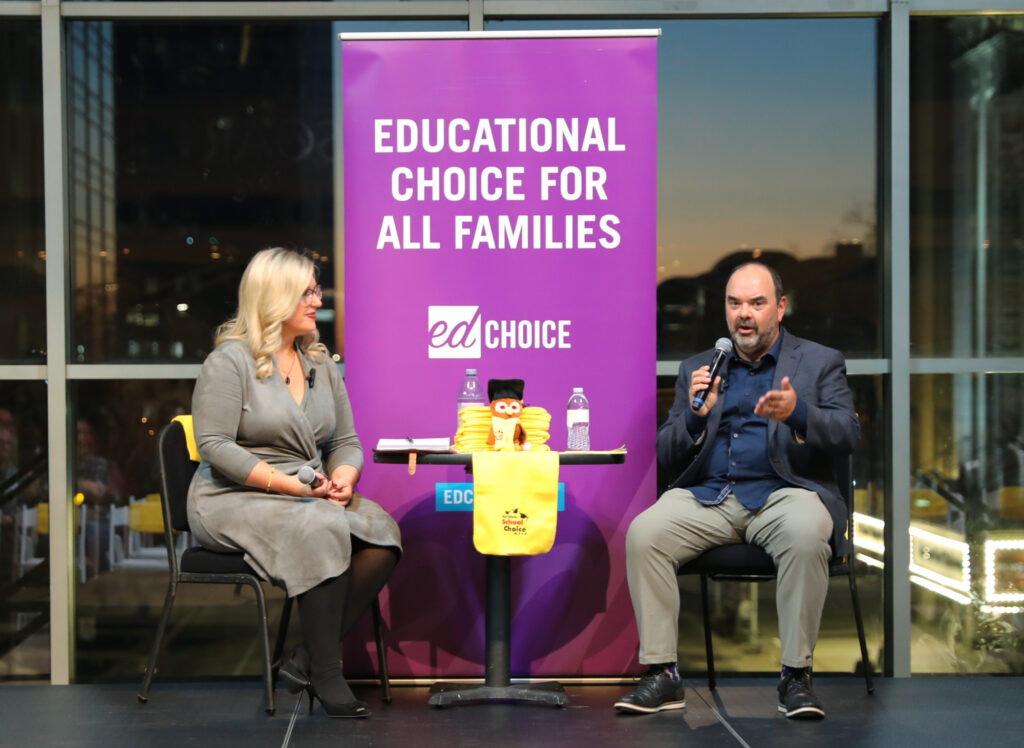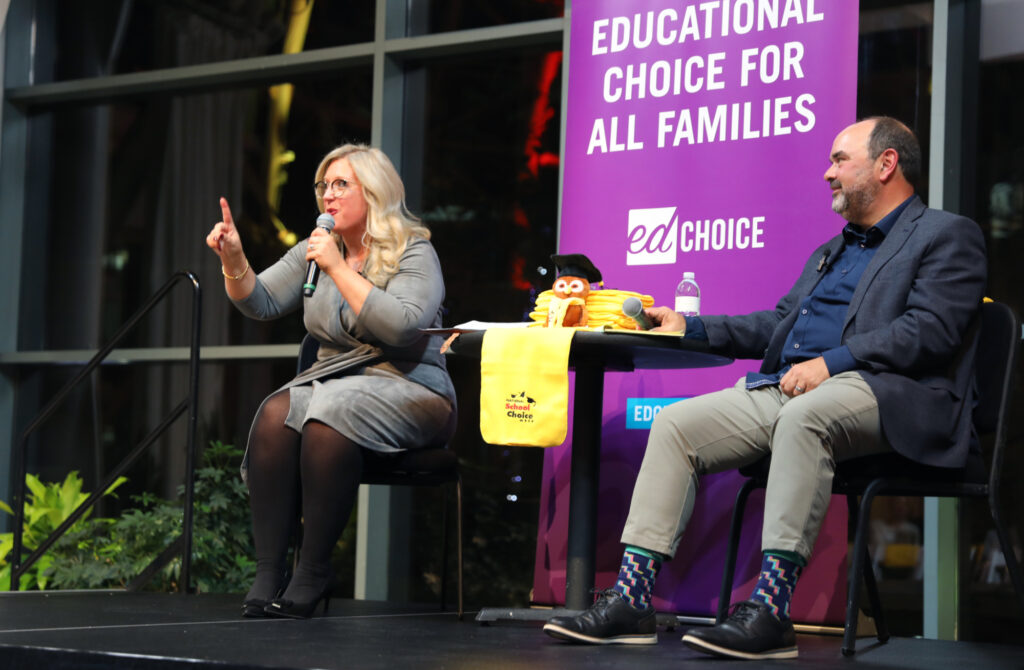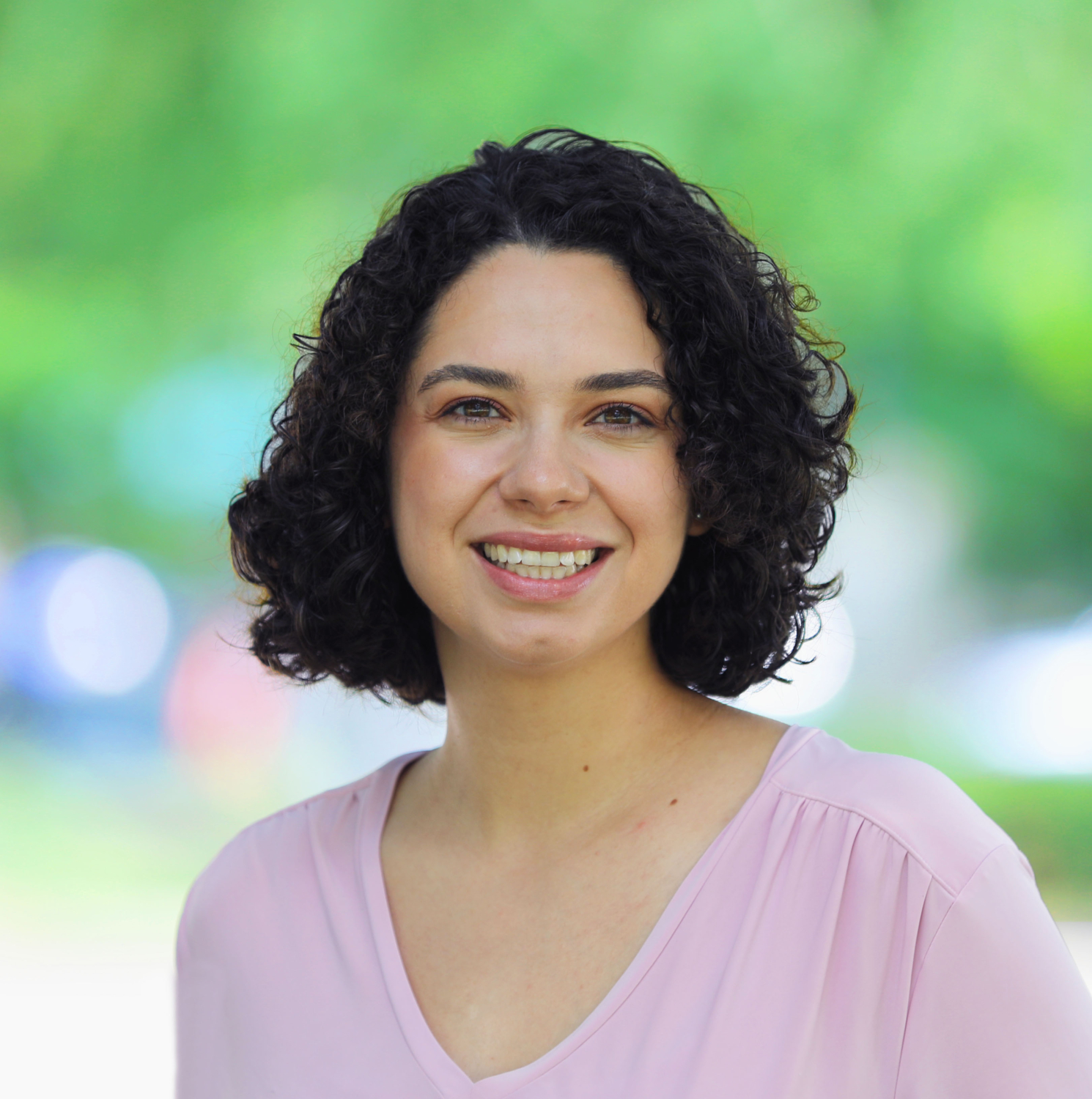Indiana’s School Choice Success and Future Innovations
National School Choice Week (NSCW) is always a time to celebrate educational opportunity, and this year’s EdChoice event in Indianapolis on January 28 was no exception. Featuring a conversation between EdChoice’s Executive Vice President of Programs Brian McGrath and Indiana’s Secretary of Education, Katie Jenner, the fireside chat explored Indiana’s school choice journey, the evolution of public perception, and the innovative steps the state has taken to enhance educational access and quality.
A Legacy of Leadership in School Choice
McGrath reflected on the long road Indiana has traveled in expanding educational choice. “When I started at EdChoice—back when we were the Friedman Foundation in 1999—Texas was the big win we were chasing. Twenty-five years later, they’re still working on it. Meanwhile, Indiana has become one of the greatest school choice success stories in the nation.”
Indiana’s journey began with small steps. In the 1990s, the Choice Charitable Trust was established to provide scholarships to low-income families in Indianapolis, proving that even small-scale school choice efforts could have a meaningful impact. This initiative demonstrated the demand for educational options and set the stage for larger reforms.
By 2001, Indiana had passed its first charter school law, expanding options for students beyond traditional district schools. The real game-changer, however, came in 2011 when Indiana launched its Choice Scholarship program, one of the most expansive in the country at the time. Over the years, eligibility for the program steadily grew, allowing more families to take advantage of educational opportunities beyond their assigned district schools.
Fast forward to today, Indiana’s Education Scholarship Account Program has reshaped the landscape once again. Education Saving Accounts provide families with state-funded accounts to customize their child’s education, whether through private school tuition, homeschooling expenses, tutoring, or specialized services.
“And we’re not stopping there,” Jenner emphasized. “The goal is to extend ESAs to all students in Indiana. Every parent should have the ability to choose what’s best for their child—no exceptions.”
From Skeptic to Advocate: Jenner’s Personal Evolution
“When school choice policies were first being introduced, I wasn’t a believer,” Jenner said. “I was a young teacher in a public school, and I thought we were doing everything right.”
That changed when she started visiting other schools—charter, private, public—where different approaches were succeeding. “Every time I walked into a school, I’d ask myself, ‘Would I send my kids here?’” she said. “And in some places, the answer was a resounding yes. It made me realize that school choice isn’t about picking winners and losers—it’s about ensuring every child finds the right fit.”
Jenner described the moment when her perspective truly shifted. “I remember walking into a charter school that was doing incredible work with students who had struggled in traditional settings,” she said. “They had smaller class sizes, flexible scheduling, and innovative teaching methods that engaged students in ways I hadn’t seen before. It forced me to take a hard look at what we were offering in our public school and ask, ‘How can we do better?’”
Another pivotal moment came when she spoke with parents who had exercised school choice. “One mother told me how her son had completely transformed after switching to a school that better suited his learning style. She said, ‘For the first time, he’s excited to go to school.’ That was powerful.”
Jenner acknowledged that embracing school choice required humility. “As educators, we pour our hearts into what we do, so it’s not always easy to step back and recognize that another model might be serving kids better. But if our goal is truly about what’s best for students, we have to be willing to evolve.”





Reimagining High School and Workforce Development
While school choice is often framed as competition between sectors, the chat highlighted its broader impact. “Milton Friedman always said the real point of school choice is to drive innovation,” McGrath noted. “Test scores matter, sure, but the bigger goal is a more creative, student-centered learning system. We have to make high school more valuable for students.”
A major focus of the discussion was Indiana’s groundbreaking Career Scholarship Accounts (CSAs) and the broader effort to redefine high school education. “For too long, we’ve been operating under the same outdated system, while the world around us has changed dramatically,” Jenner said.
CSAs allow high school students to access up to $5,000 in funding for career and technical education, apprenticeships, and work-based learning experiences. “This program isn’t just about funding—it’s about giving students the opportunity to build real skills and graduate with a plan,” Jenner explained. “We’re talking about preparing kids for college, the workforce, and even military service in ways that make sense for their individual goals.”
McGrath reinforced the idea that school choice must include diverse pathways for students. “We’re not just talking about choosing between a public or private school,” he said. “Students should be able to choose a learning path that truly fits their future—whether that means dual enrollment, hands-on job training, or early college credits.”
Overcoming Challenges and Looking Ahead
Despite Indiana’s progress, the speakers acknowledged challenges. “One of the biggest hurdles is simply helping parents understand their options,” Jenner said. “I can’t tell you how many Uber rides I’ve had where the driver starts asking me about school choice. Parents want to know what’s out there—they just need help navigating it.”
Jenner noted that Gov. Mike Braun is making school choice a priority. “We’re looking at doubling ESA funding, expanding CSAs, and making sure every child—whether they choose public, private, charter, or homeschool—has the best opportunities available,” Jenner said.
Both speakers agreed that Indiana must maintain its momentum. “We can’t get complacent,” Jenner warned. “Texas has spent 25 years trying to make progress. We have a chance to keep Indiana at the forefront of educational choice and innovation—if we keep pushing.”
The conversation at EdChoice’s NSCW event made one thing clear: Indiana isn’t just a leader in school choice—it’s setting the pace for the rest of the country. From broadening access to school options to pioneering new approaches to high school education, the state continues to shape the future of student-centered learning.
As Jenner put it, “Every child counts. That means every parent should have the power to decide what’s best for their family. And we’re going to keep fighting to make that a reality for everyone.”




